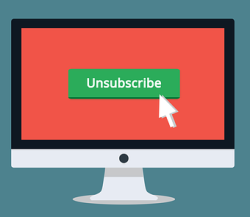A few weeks ago, a famous internet marketer had a problem. The subscribers to his newsletter were complaining. He didn’t say so explicitly, but I’m guessing from the tone of his email that his open rates, clicks, and sales were going down.
His readers were also likely unsubscribing from his email list. Since he makes quite a bit of money from email marketing, this must have caused a significant reduction in his cash flow.
But why do people unsubscribe from email lists?
Too many pitches
When I signed up for this newsletter, I expected a monthly newsletter, with an occasional pitch or an ad for something. I got the newsletter, with some excellent content. I also got six or seven sales pitches (at random intervals on random days, it seemed). And, I couldn’t tell which was which. It got to the point where I saw his name and immediately hit the delete button.
A megaphone, not a conversation
He got caught up in all his new products, and didn’t realize that he was overdoing the sales pitches. As Dave Navarro says, “Free, free, free, sell.” Not everything can or should be free, but too much selling will send people to the exits.
Not relevant or personal
He was talking at people (caught up in his new products) rather than to them. The email promising news for people over 50 went straight to the trash folder.
I’m also signed up for newsletters from Sonia Simone and Copyblogger. Their emails are personal, unique, and sometimes make me laugh. I feel I know them, and like them, even though we’ve never met. Most importantly, I look forward to reading them. I bet other people do too.
To his credit, our guru has changed his approach. His newsletters now spell out exactly what to expect, how often he will email, and take a softer tone. He’s also offering more free material.
How often do you send your newsletter? What’s your mix of free and sales content?
 Getting visitors to your site is great, but if you want them to come back, and if you want them to buy something from you, you’ll need a way to reach them directly.
Getting visitors to your site is great, but if you want them to come back, and if you want them to buy something from you, you’ll need a way to reach them directly.


